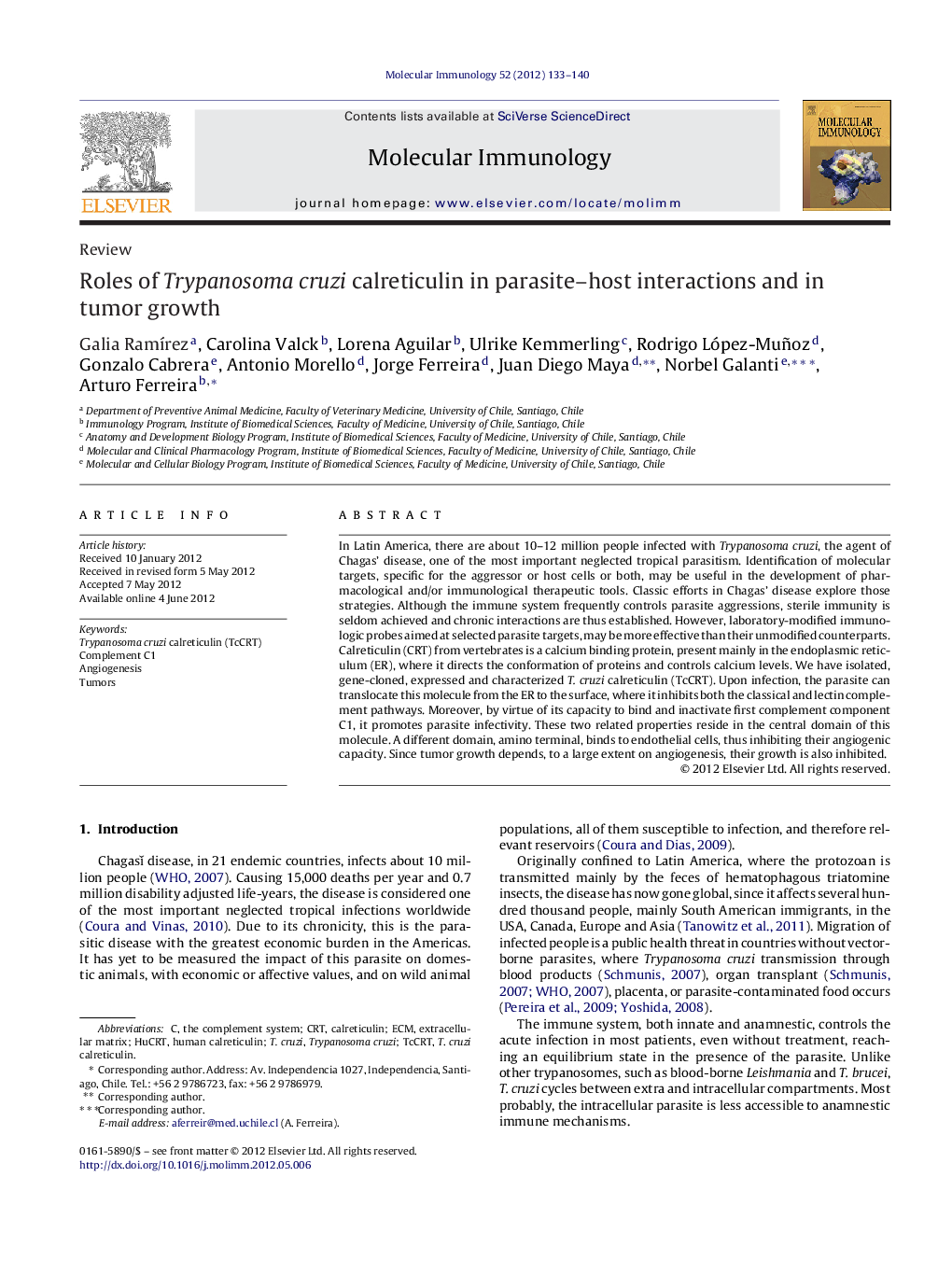| Article ID | Journal | Published Year | Pages | File Type |
|---|---|---|---|---|
| 2830925 | Molecular Immunology | 2012 | 8 Pages |
In Latin America, there are about 10–12 million people infected with Trypanosoma cruzi, the agent of Chagas’ disease, one of the most important neglected tropical parasitism. Identification of molecular targets, specific for the aggressor or host cells or both, may be useful in the development of pharmacological and/or immunological therapeutic tools. Classic efforts in Chagas’ disease explore those strategies. Although the immune system frequently controls parasite aggressions, sterile immunity is seldom achieved and chronic interactions are thus established. However, laboratory-modified immunologic probes aimed at selected parasite targets, may be more effective than their unmodified counterparts. Calreticulin (CRT) from vertebrates is a calcium binding protein, present mainly in the endoplasmic reticulum (ER), where it directs the conformation of proteins and controls calcium levels. We have isolated, gene-cloned, expressed and characterized T. cruzi calreticulin (TcCRT). Upon infection, the parasite can translocate this molecule from the ER to the surface, where it inhibits both the classical and lectin complement pathways. Moreover, by virtue of its capacity to bind and inactivate first complement component C1, it promotes parasite infectivity. These two related properties reside in the central domain of this molecule. A different domain, amino terminal, binds to endothelial cells, thus inhibiting their angiogenic capacity. Since tumor growth depends, to a large extent on angiogenesis, their growth is also inhibited.
► F(ab′)2 anti-TcCRT inhibits T. cruzi infectivity. ► T. cruzi infection correlates with decreased tumor growth. ► Recombinant TcCRT inhibits both angiogenesis and tumor growth.
